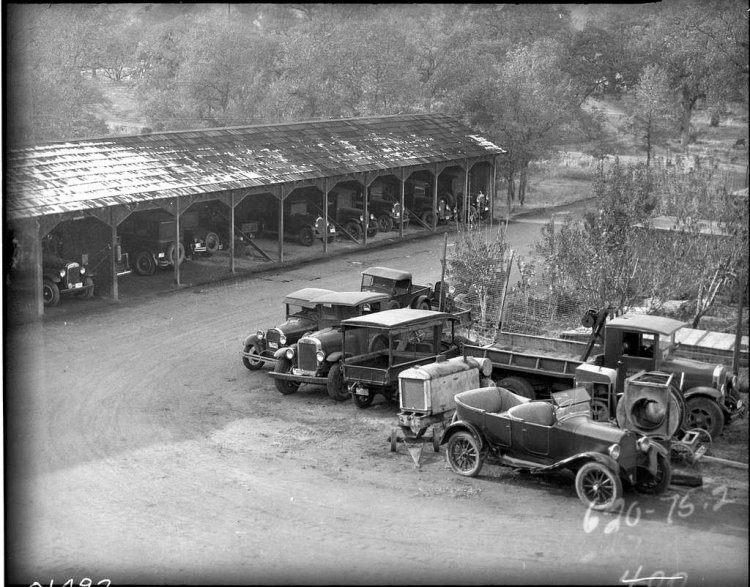History of classic cars in Nepal
Discover the journey of History of Classic Cars in Nepal, from early imports to the present-day car clubs and events. Learn about the iconic cars and the people who helped shape Nepal's classic car culture.

The history of classic cars in Nepal is a fascinating one, with a rich and varied past that includes everything from the first car being brought into the country for the purpose of wild hunting, to Hitler gifting cars to the Nepalese monarchy in an attempt to sway them to fight for the Axis powers during World War II. This article will explore the many facets of classic car culture in Nepal, from the early days of car ownership to the present day, and will examine the various ways in which Nepalese have interacted with and preserved classic cars over the years.
Introduction
Nepal has a long and storied history when it comes to classic cars, with a rich and varied past that includes everything from the first car being brought into the country for the purpose of wild hunting, to Hitler gifting cars to the Nepalese monarchy in an attempt to sway them to fight for the Axis powers during World War II. Classic cars have played an important role in Nepali history, both as symbols of wealth and power and as cultural icons that have shaped the country's identity over the years. This article will explore the many facets of classic car culture in Nepal, from the early days of car ownership to the present day, and also will examine the various ways in which Nepalis have interacted with and preserved classic cars over the years.
Early Days of Car Ownership in Nepal
The first car to be brought into Nepal was a Rolls Royce that belonged to the then Prince Edward, who later became King Edward VIII of England. He brought the car across the Indian border in 1922 for the purpose of wild hunting in Kasara, Chitwan. However, it would be several years before the general public had access to cars. In fact, it was illegal for people to own cars until the early 1950s. The Rana family and a Nepali scientist named Gehendra Samsher independently imported a Ford company vehicle, but Nepalis weren't able to legally own vehicles until Chandra Samsher purchased one for himself.
The Rana dynasty saw a tradition of buying cars to complement their luxurious lifestyle. King Mahendra also bought American Chrysler and Mercedes Benz as his royal ride. However, at that time people would have to carry the car in a bamboo cart because there was no road connectivity from Terai to Kathmandu. There is a history of bringing around four dozen cars with the help of hundreds of Balami and Tamang porters from the Makwanpur district. They were all used to add to the luxury of the Shah and Rana lineage. The usual routes of car carrying were Chitlang, Kushle Chaur, Markhu Pauwa, Kulekhani, and Phakhel. The porters also belonged to the vicinity of those areas. The cars were first brought to Kolkata (then Calcutta) and then to Amlekhgunj. The porters would make a cart and start carrying the car after removing the tires from Bhimphedi, the then headquarters of Makwanpur. The strong porters would take 2-3 days to reach Chunikhel, Thankot. From Chunikhel, the car would be taken to the palaces by driving. The Newari community with a surname of Balami who served as a porter for a long time switched their professions later to become businessmen and farmers. But Tamang community continued their work as porters. Hence historically, Makwanpur’s Tamang people are recognized as the car carriers.
As Nepal opened up to the world in the 1950s, classic cars began to make their way into the country in greater numbers. King Mahendra, who ruled from 1955 to 1972, was known for his love of American cars, particularly Chryslers. In fact, he owned several Chryslers, which he would often drive around the capital city of Kathmandu. One of his most notable Chryslers was a 1957 Imperial Crown Convertible, which he had imported from the United States in 1958.
King Mahendra's collection of classic cars was eventually put on display at the Narayanhiti Palace Museum, which opened in 1970. The museum featured several of the king's cars, including his Imperial Crown Convertible, a 1959 Cadillac Fleetwood, a 1963 Lincoln Continental, and a 1965 Buick Electra. Unfortunately, many of the cars were damaged or destroyed during the Nepalese Civil War in the late 1990s.
The Rana family, which had ruled Nepal as prime ministers from 1846 to 1951, also had a love for classic cars. They imported many cars from Europe, including Rolls-Royces and Bentleys, to show off their wealth and status. These cars were often carried on the backs of porters to reach Kathmandu, as there were few roads in the country at the time.
Many of the classic cars owned by the Rana family are now on display at the Nepal Motor Company Museum in Kathmandu. The museum features cars from the early 1900s to the 1960s, including several Rolls-Royces, Bentleys, and Daimlers. The museum also has a collection of vintage motorcycles, including a 1926 Harley-Davidson and a 1942 Indian Chief.
The Nepal Motor Company, which was founded in 1948, is one of the oldest car dealerships in Nepal. The company has imported and sold many classic cars over the years, including Jaguars, MGs, and Triumphs. Today, the company is still in operation and continues to sell and service cars in Kathmandu.
Classic cars have also played a role in Nepalese cinema over the years. In the 1960s and 1970s, many Nepalese films featured classic cars, particularly American cars, as symbols of wealth and status. Some of the most popular films of the era, such as "Kusume Rumal" and "Chino," featured classic cars prominently.
Despite the challenges of maintaining and restoring classic cars in Nepal, many enthusiasts continue to cherish these vintage vehicles. They represent a unique and fascinating part of Nepal's history and culture, and they continue to capture the imagination of people around the world.
In conclusion, the history of classic cars in Nepal is a rich and fascinating subject. From the early days of car imports in the 1920s to the present day, classic cars have played an important role in Nepal's cultural and social history. They have been transported to their destinations on the backs of porters and have been owned by kings, prime ministers, and rich families. Today, classic car enthusiasts in Nepal continue to cherish and preserve these vintage vehicles, ensuring that their legacy lives on for future generations to enjoy.
What's Your Reaction?





































































































